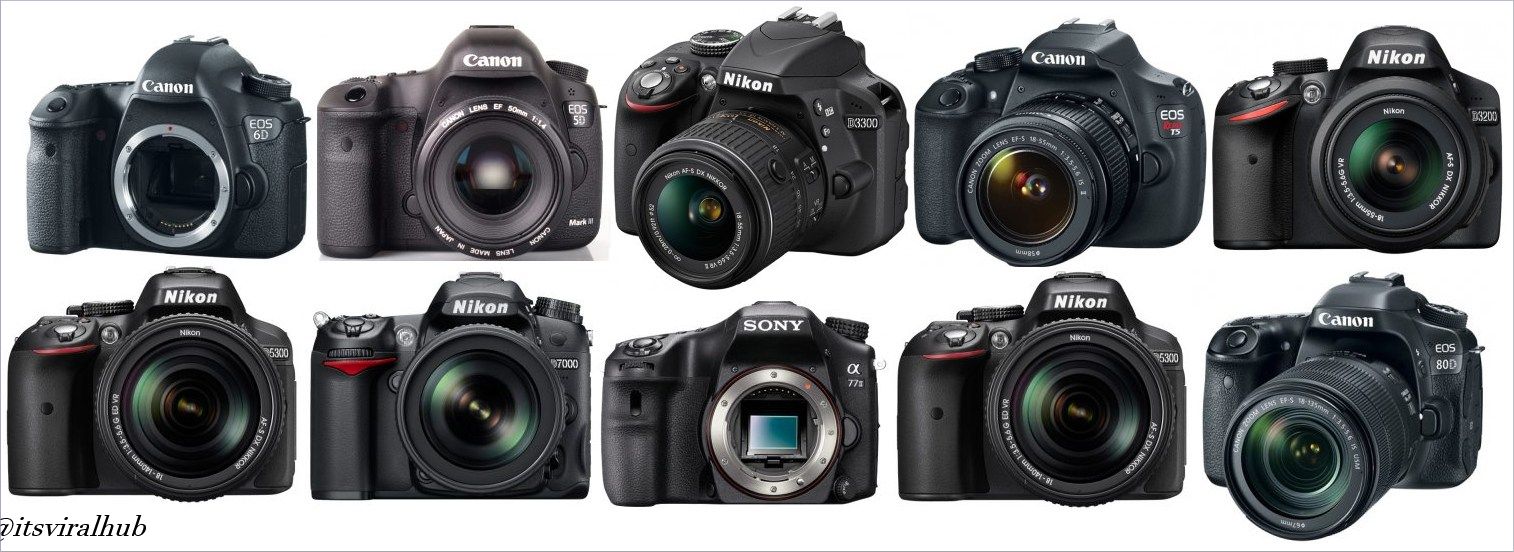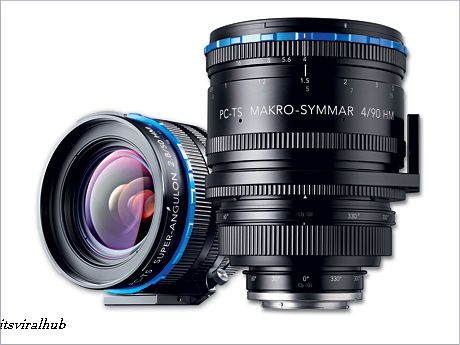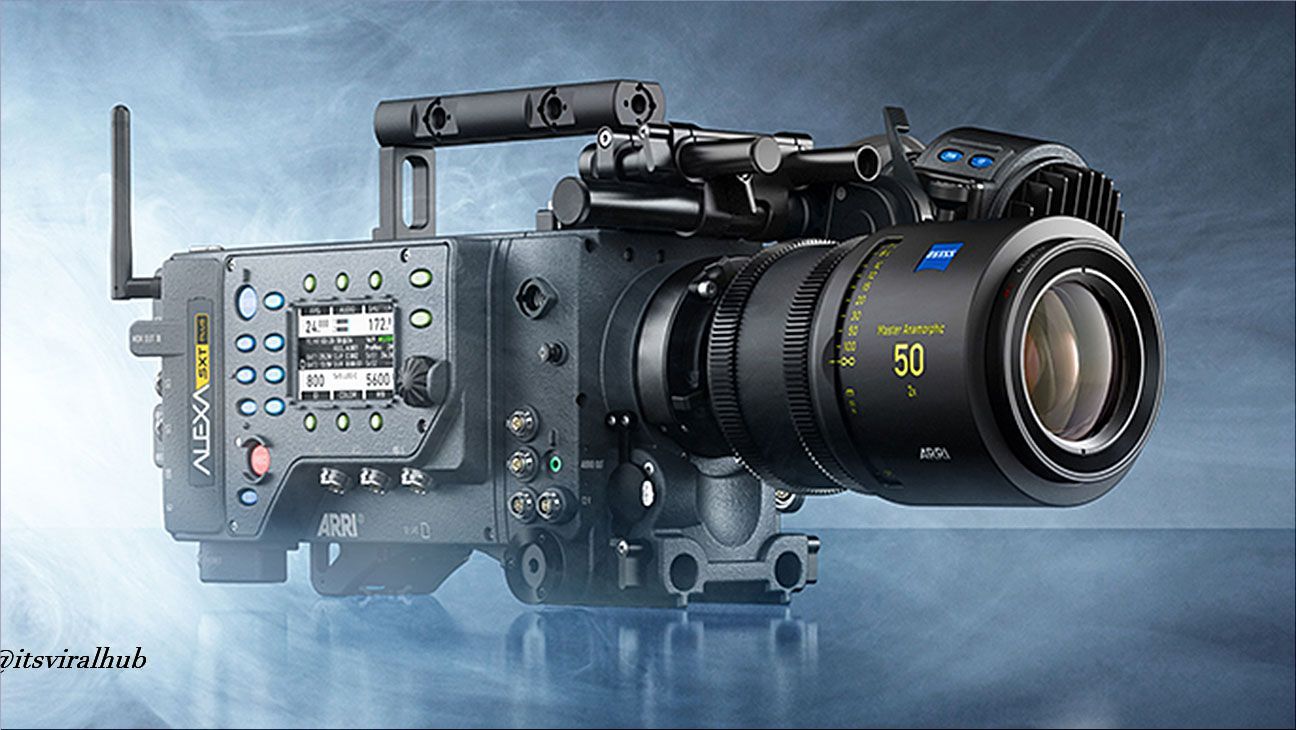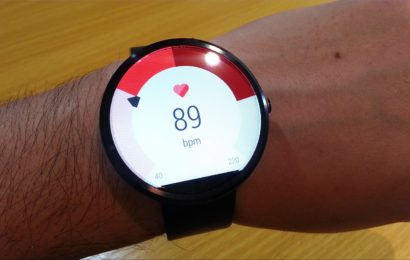A digital camera captures images in a digital format, unlike a conventional camera, which captures images using photographic film.
A camera is a lightproof device containing a lens that collects light and directs it towards the film (in an optical camera) or imaging device (in a digital camera). There are several types of cameras available today, each an advanced version of the camera obscura used in ancient times. All cameras have a lightproof box, a lens, and a shutter to regulate light exposure on the light-sensitive surface. They also have a viewfinder to frame the scene and a focusing mechanism. Make sure to incorporate relevant keywords for optimization.

Still Digital Cameras
History of Digital Cameras
The history of digital photography goes back to the 1970s when Eugene F. Lally demonstrated the creation of still photographs using a mosaic photosensor. Eastman Kodak engineer Steve Sasson built the first prototype digital camera in 1975 that captured black-and-white images on a magnetic cassette tape with a resolution of 0.01 megapixels. He used this prototype to capture the first digital photograph in history, finishing it in just 23 seconds. Incorporating this information on your website will optimize your page for SEO.
The Fuji DS-1P was the first digital camera to record images as computer files, debuting in 1988. The camera, however, was never sold in the United States. The first commercially available digital camera with a 1.3-megapixel sensor was the Kodak DCS-100, which was released in 1991. Modern digital cameras are multipurpose and can now record audio/video in addition to still images thanks to technological advancements.
Benefits:
1 – The visual quality is better. Image resolution on digital cameras can range from fair to exceptional.
2 – A reasonable fee is paid. A digital camera may be purchased at a fair price.
3 – The images can be downloaded to your laptop. It is simple to connect your laptop to your digital camera and transfer the images to your hard drive.
4 – Large print sizes are available. Pictures may be printed at big proportions by any plotter due to their excellent quality.
5 – You may send your pals the photos. Your loved ones can receive the photos via email.
6 – You may keep the photographs on hard drives or CDs. After the photos have been downloaded from the digital camera to the computer, they can be permanently stored on a CD or hard drive.
7 – You can travel with the camera in your pocket. The digital camera is convenient and enjoyable to travel with due to its tiny size.
8 – Get up close and personal with your subject. Zoom lenses allow you to get up up and personal with your subject. Flowers, bugs, stamps, coins, and other objects may all be captured in excellent close-ups.
9 – You can use a computer to edit the photograph. The captured photographs may be edited using any photo editing program.
10 – Even in low-light conditions, you can shoot quality images. Digital cameras can readily shoot clear photographs even in low-light situations thanks to a variable over sensitivity or ISO equivalents.
11 – You can capture moving items in high-quality static images. The quick burst rate of digital cameras makes it simple to capture images for sports and fashion.
12) You save cash. Purchasing photographic films and processing them into negatives and positives is not necessary. Additionally, the batteries are frequently long-lasting lithium-ion rechargeable batteries.
13 – You can select based on your preferences and needs. There are several models available, including the professional digital camera, tiny digital camera, underwater digital camera, and waterproof digital camera.
Storage Devices:
Images are captured and stored by digital cameras using memory. Onboard flash memory, 3.5″ floppy discs, video floppy discs, PCMCIA hard drives, CD or DVD, CompactFlash memory cards, Microdrives, Memory Stick, SD/MMC, MiniSD Card, MicroSD Card, XD-Picture Card, SmartMedia, and FP Memory are a few examples of the storage media utilized.
Power:
Powerful, compact batteries are used to power the large amount of power that digital cameras require. The two main categories of batteries are off-the-shelf and proprietary. Batteries that are readily available include AA, CR2, CR-V3, AAA, and RCR-V3. They are nickel metal hydride (NiMH) or lithium-ion (Li-Ion) batteries. In the majority of cameras, standard AA non-rechargeable alkaline batteries either do not function or function for very little time.
Proprietary batteries are often sold as aftermarket replacement components and are constructed in accordance with the manufacturer’s own standards. Lithium-ion batteries are typically utilized as exclusive batteries for digital cameras.
Top 5 Most Expensive Motorcycles on Sale in India
Centering and Composing the Scene
Aside from pinhole digital cameras, which concentrate the picture on the film through a modest opening, every other digital camera utilizes a focal point for centering. The central length of a focal point, i.e., the separation between the back of the focal point (when concentrated on boundlessness) and the film (or imaging gadget), decides the edge of view and the measure of articles as they show up on the imaging surface. The picture is centered around that surface by changing the separation between the focal point and the surface. In most 35-mm digital cameras (among the most generally utilized of current optical cameras) and advanced cameras this is finished by turning the focal point, subsequently drawing it nearer to or more distant from the film or imaging gadget. With twin-focal point reflexes and bigger view cameras, the entire focal point and the board to which it is connected are advanced toward or far from the film.
To see the subject for making (and, for the most part, to help bring it into concentrate) almost every digital camera has some sort of viewfinder. One of the least complex sorts, utilized in most view digital cameras, is a screen that is set on the back of the camera and supplanted by the film in making the presentation. This tedious strategy is kept away from in the cutting-edge 35-mm single-focal point (and other) reflex cameras by setting the screen in an extraordinary lodging over the camera. Inside the camera, before the film plane, there is a portable mirror that bobs the picture from the focal point to the screen for review and centering and afterward flips off the beaten path when the shade is stumbled, with the goal that the picture hits the film rather than the mirror. The mirror returns consequently to put after the introduction has been made. In rangefinder cameras, the subject is for the most part seen by methods for two separate windows, one of which sees the scene specifically and the other of which contains a flexible optical mirror gadget. At the point when this gadget is balanced by pivoting the focal point, the picture entering through the viewpoint can be brought into enlist, at the eyepiece, with the picture from the immediate view, along these lines concentrating the subject on the film. Computerized cameras have an optical viewfinder, a fluid gem show (LCD) screen, or both. Optical viewfinders are regular in simple to use cameras. An LCD screen permits the client to see the photo’s substance before the photo is taken and subsequently to, permits the erasure of undesirable pictures.
Controlling the Light Entering the Digital Camera
The speed of a focal point is shown by reference to its greatest opening, or gap, through which light enters the digital camera. This gap, or f-stop, is controlled by an iris stomach (a progression of covering metal cutting edges that frame a hover with an opening in the middle whose width can be expanded or diminished as wanted) inside the focal point. The higher the f-stop number, the littler the gap, and the other way around.
A shade controls the time amid which light is allowed to enter the digital camera. There are two fundamental sorts of shade, leaf-sort and central plane. The leaf-sort screen utilizes a ring of covering metal cutting edges like those of the iris stomach, which might be shut or opened to the coveted degree. It is ordinarily situated between the focal point components yet once in a while is put behind or before the focal point. The central plane screen is found just before the film plane and has maybe a couple of material or metal shades that travel vertically or evenly over the film outline. By modifying the shade speed in conjunction with the width of the gap, the correct measure of light (dictated by utilizing a light meter and affected by the relative affectability of the film being utilized) for a decent introduction can be gotten.
Highlights of Modern Digital Cameras
The greater part of the present 35-mm digital cameras, both rangefinder and reflex models, join a quick film-transport system, focal point compatibility (whereby focal points of numerous central lengths, for example, wide-edge and fax, might be utilized with a similar camera body), and an implicit light meter. Many additionally have a programmed presentation gadget whereby either the shade speed or the gap is managed consequently (by methods for an exceptionally complex strong state hardware framework) to deliver the “right” introduction. Frill incorporates channels, which revise for inadequacies in film affectability; streak globules and blaze components for providing light; and monopods and tripods, for unfaltering help.
Basic box cameras, including cameras of the Eastman Kodak Instamatic sort, are settled concentration digital cameras with constrained or no influence over presentation. Twin-focal point reflex cameras utilize one focal point exclusively to view, while alternate concentrates the picture on the film. Additionally exceptionally mainstream are reduced 35-mm rangefinder cameras; 126 cartridge cameras; and the subminiature cameras, including the 110 “pocket” variety of the Instamatic sort and the Minox, which utilizes 9.5-mm film. Different classes being used incorporate roll-and sheet-film single-focal point reflex (SLR) cameras that utilization 120 and bigger size movies; self-preparing Polaroid cameras (see Land, Edwin Herbert); squeeze cameras and view cameras that utilization 21/4 × 31/4 in., 4 × 5 in., 5 × 7 in., 8 × 10 in., and 11 × 14 in. film sizes; stereo cameras, the twofold slides from which require an uncommon watcher; and different unique sorts, for example, the super wide-edge and the all encompassing cameras. (The numbers 110, 120, and 126 are film-estimate assignments from the producer and don’t allude to genuine estimations.) Digital cameras are basically the same in operation however catch the picture electronically as opposed to by means of a photographic emulsion.
The littler, stash-measured, programmed digital cameras of the Advanced Photo System (APS), presented in 1996, are one of a kind in that they are a piece of an incorporated framework. Utilizing attractive strips on the film to speak with the photofinishing hardware, the camera can convey screen speed, opening setting, and lighting conditions for each casing to the mechanized photofinishing gear, which would then be able to remunerate to maintain a strategic distance from over-or underexposed photographic prints. Essential highlights of the APS cameras are drop-in stacking, three print designs (exemplary, or 4 by 6 in.; hello there vision, or 4 by 7 in.; and all-encompassing, or 4 by 11.5 in.) at the flick of a switch, and auto-center, auto-presentation, “simple to use” operation.
Advanced digital cameras have a few extraordinary highlights. Determination is comprised of building pieces called pixels, one million of which are known as a megapixel. Advanced cameras have resolutions extending from short of what one megapixel to more prominent than seven megapixels. With more megapixels, more picture detail is caught, bringing about keen, bigger prints. Center is a component of “zoom.” Most advanced cameras have an optical zoom, a computerized zoom, or both. An optical zoom focal point really pushes outward toward the subject to take sharp shut everything down; this is a similar sort of zoom focal point found in conventional cameras. Computerized zoom is an element of programming inside the camera that produces the edges from a photo and electronically extends the middle part of the picture to fill the edge, bringing about a photo with less detail. A few models likewise have a full-scale focal point for close-ups of little, adjacent articles. The capacity of computerized photos might be in the digital camera’s inward memory or in removable attractive cards, sticks, or circles. These pictures can be exchanged to a PC for survey and altering or might be seen on the digital camera’s fluid precious stone show. Computerized cameras regularly likewise can record video, however, have less capacity limit and less video highlights than camcorders.
The marriage of microelectronics and advanced innovation prompted the improvement of the camera telephone, a phone that likewise has picture-(and video-) taking capacity; cell phones, which incorporate a scope of utilizations into a cellphone, additionally regularly incorporate a camera. Some such telephones can promptly send the photo to another digital camera telephone or PC by means of the Internet or through the phone organize, offering the chance to take and offer pictures progressively. Dissimilar to the conventional camera, and to some degree the comparable advanced digital camera, which are utilized principally for booked occasions or exceptional events, the camera telephone is accessible for extemporaneous or unforeseen photographic open doors.
Film Cameras

The film digital camera arrives in an assortment of sizes, from 8 mm to 35 mm and 75 mm. Movie film comes in spools or cartridges. The spool sort, utilized for the most part in 16-and 35-mm camera frameworks, must be strung through the camera and connected to the take-up spool by hand, though a film cartridge—accessible for the super-8-mm frameworks—keeps away from this system. In all cutting edge motion picture cameras, the film is driven by a little electric engine that is fueled by batteries.
Movie digital cameras all work on a similar fundamental standard. Exposures are typically made at a rate of 18 or 24 outlines for every second (fps), which implies that as the film experiences the digital camera it stops for an exceptionally short minute to uncover each edge. This is proficient in almost all motion picture digital cameras by a gadget called a turning screen—essentially a half-hover of metal that twists, on the other hand, opening and shutting a gap, behind which is found the film. To influence the film to go along its way and keep still for the presentation of each edge, a gadget called a paw is required. This is another little bit of metal that on the other hand flies into the sprocket gaps or punctures in the film, pulls the film down, withdraws to discharge the film while the casing is being uncovered, and lastly comes back to the highest point of the divert in which it moves to get a handle on the following edge. The development of the screen and paw are synchronized, with the goal that the shade is shut while the paw is pulling the casing descending and open for the moment that the edge is unmoving in its own particular channel or entryway.
Focal points for motion picture cameras additionally come in “ordinary,” wide-edge, and long central lengths. Some more established cameras had a turret on which mounted every one of the three focal point sorts. The coveted focal point could be settled into position by basically turning the turret. Some super-8 cameras accompany a solitary zoom focal point, fusing various central lengths that are controlled by moving a specific gathering of focal point components toward or far from the film. The majority of these cameras have a programmed introduction gadget that directs the f-quit by the perusing made by an inherent electric eye. Motion picture camera focal points are engaged similarly as are still camera focal points. For review purposes, a super-8 utilizes a bar splitter—an incompletely silvered reflector that occupies a little level of the light to a ground-glass viewfinder while enabling the vast majority of the light to achieve the film. Different cameras have a mirror-shade framework that transmits all the light, at interims, on the other hand to film and viewfinder. A large number of the super-8 cameras additionally contain some sort of rangefinder, incorporated with the centering screen, for exact centering.
Improvement of the Camera
The first idea of the digital camera dates from Grecian circumstances, when Aristotle alluded to the standard of the camera obscura [Lat.,=dark chamber] which was truly a dim box—in some cases sufficiently substantial for the watcher to remain inside—with a little gap, or opening, in one side. (A focal point was not utilized for centering until the Middle Ages.) An upset picture of a scene was shaped on an inside screen; it could then be followed by a craftsman. The primary chart of a digital camera obscura showed up in an original copy by Leonardo da Vinci in 1519, yet he didn’t guarantee its innovation.

The chronicle of a negative picture on a light-touchy material was first accomplished by the Frenchman Joseph Nicéphore Niepce in 1826; he covered a bit of paper with black-top and uncovered it inside the digital camera obscura for eight hours. Albeit different sorts of gadgets for making pictures in fast progression had been utilized as right on time as the 1860s, the primary down-to-earth movie camera—influenced attainable by the development of the main adaptable (paper to base) films—was worked in 1887 by E. J. Marey, a Frenchman. After two years Thomas Edison developed the primary financially effective camera. Be that as it may, cinematography was not open to novices until 1923, when Eastman Kodak created the initial 16-mm inversion security film, and Bell and Howell presented digital cameras and projectors with which to utilize it. Frameworks utilizing 8-mm film were presented in 1923; super-8, with its littler sprocket gaps and bigger casing size, showed up in 1965. A model of the computerized digital camera was produced in 1975 by Eastman Kodak, yet advanced cameras were not marketed until the 1990s. From that point forward they have bit by bit superseded many film-based cameras, both for customers and experts, driving numerous makers to dispose of or lessen the quantity of the film cameras they create.



